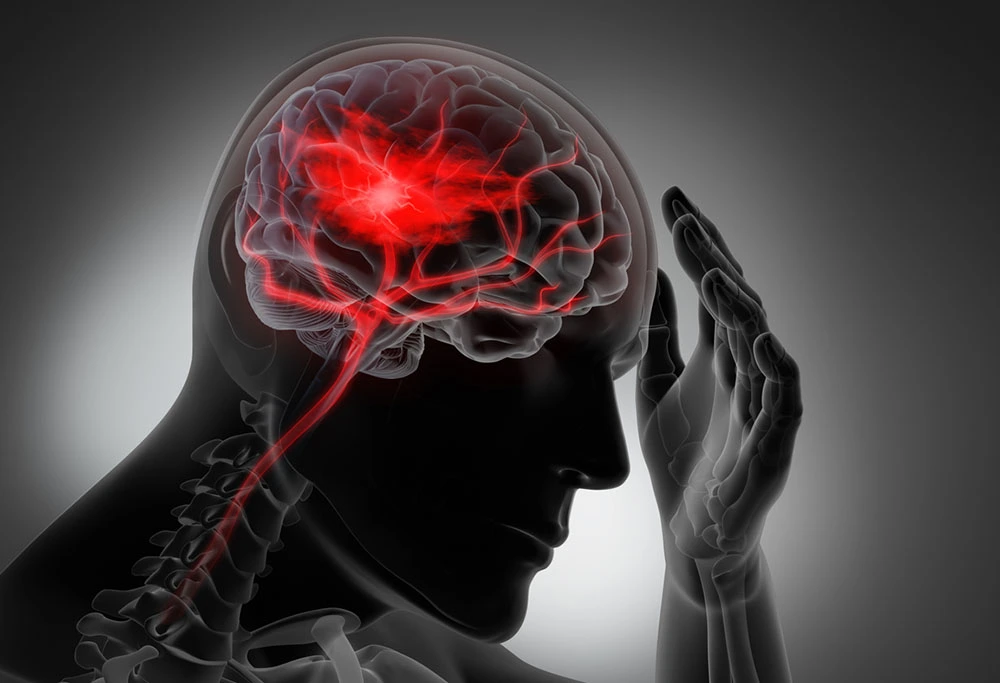What is a Seizure?
A seizure is a sudden burst of electrical activity in the brain that alters the communication between nerve cells (neurons). Seizures can affect behaviour, motility, emotions and level of awareness.
What happens in a seizure depends on the brain area where the electrical burst occurred. You might experience:
- Unusual feelings, sensations or movements that you can’t control
- Loss of awareness
- General stiffness in the body
- Shaking or blinking repeatedly
Seizures last several seconds to a few minutes and don’t require medical attention. However, if the seizure lasts longer than 5 minutes or the person has not experienced a seizure before, it is considered a medical emergency.
Several different types of seizures can be categorised into two main groups: focal seizures and generalised seizures.
Focal Seizures (Partial Seizures)
Focal seizures start in one side of the brain. These seizures are also called partial seizures. During focal onset seizures, you might be aware of everything around you but won’t be able to move or react. This outburst is also known as the focal aware seizure. Most focal aware seizures last from several seconds to two or three minutes.
On the other hand, if your state of awareness is disrupted during a seizure, you are experiencing a focal impaired awareness seizure. Depending on the individual, this type of seizure may last one to three minutes.
Focal onset seizures are further categorised into simple, complex, and secondary generalised seizures, depending on the symptoms.
- Simple focal seizures – involve twitching or other unusual sensations like peculiar taste and smell. This type of seizure occurs in a small part of the brain.
- Complex partial seizure – involves dizziness, confusion or a state of daze. You might be unable to interact or respond to questions and directions for several seconds or minutes.
- Secondary generalised – seizures start in one area of the brain and progress to both sides of the brain. You experience a focal seizure that further continues as a generalised seizure.
What to Do in Case of a Focal Seizure?
People experiencing focal seizures may not be aware of their environment or actions. You may notice uncontrolled movements like repeated swallowing, lip-smacking, or moving around without purpose or direction.
Here’s what you need to do if someone around you experiences a partial seizure:
- Keep them safe from danger (fire, water, heights)
- Accompany them until the seizure is entirely over
- Stay calm
- Describe everything that happened during the seizure
Focal impaired awareness seizures typically affect a person’s level of consciousness, and you should stay positive and reassuring from the beginning to the end of the episode.

Generalized-Onset Seizures
Generalised seizures may start as focal seizures and then progress to both sides of the brain. They can also appear as generalised onset seizures affecting both sides of the brain from the beginning. Generalised seizures typically appear during childhood due to a mix-up of chemical and electrical signals between different parts of the brain.
Generalised onset seizures may be hereditary, but in most cases, people with generalised seizures don’t have a family history of an epileptic seizure. In addition, excessive alcohol consumption or sleep deprivation may contribute to the incidence of generalised seizures, particularly in people with genetic predispositions.
Some people may experience an “aura” before the seizure begins. It is also known as the warning signs of a seizure and is usually followed by unusual feelings and sensations. This is also true for focal seizures.
Common signs of generalised onset seizures include:
- Muscle stiffening
- Dazing
- Rapid blinking
- Loss of consciousness
- Uncontrolled muscle movements and convulsions (epileptic spasms)
- Blue lips
- Repetitive movements
Types of Generalized-Onset Seizures
There are different types of generalised seizures depending on the affected area of the brain. Symptoms and characteristics can vary from person to person, as well as the duration of the seizure. Based on the International League against Epilepsy, there are several types of seizures that can affect people with epilepsy. Find out more about each type of seizure, the symptoms and the base safety precautions.
Absence Seizures (Petit Mal Seizures)
Absent seizures, formerly called Petit Mal seizures) typically appear in younger children but can occur at any age. This condition is known as childhood absence epilepsy; most children outgrow it in teenagehood.
Juvenile absence epilepsy
Juvenile absence epilepsy usually starts a little later and can continue in adulthood. In many cases, people with this type of seizure also develop tonic-clonic seizures.
Absence seizures are successfully managed with anti-seizure medications.
Common symptoms of absence seizures include:
- Losing awareness, like daydreaming
- Fluttering eyelids
- Chewing motions
- Lip smacking
- Blank staring
- Moving the arms and legs
Absence seizures typically last 5-10 seconds and may appear hundreds of times within a day. Sometimes, these seizures may occur in clusters that result in a lapse of awareness.
Tonic-Clonic Seizures
A tonic-clonic seizure is the type of epileptic seizure that most people are familiar with. These seizures were also called grand mal seizures.
Tonic-clonic seizures can have a generalised onset, starting in both hemispheres simultaneously. In this case, the episode is called a generalised tonic-clonic or bilateral convulsive seizure.
Some seizures may start as a focal onset seizure on one part of the brain and spread towards the other hemisphere. This is called a focal to a bilateral tonic-clonic seizure.
The tonic-clonic seizure occurs in two phases: a tonic phase followed by a clonic phase.
Common symptoms of a tonic phase:
- Losing awareness
- Muscle stiffening that may result in falling on the floor
Common symptoms of a clonic phase include:
- Uncontrolled and swift jerking movements
- Losing bladder or bowel control
- Biting down your tongue or mouth
- Difficulty breathing
Tonic-clonic seizures usually last from one to three minutes. The seizure might need emergency assistance if it lasts five minutes or longer.
How to Help Someone During a Tonic-Clonic Seizure
Here’s what you need to do if someone around you is having a tonic-clonic seizure:
- Place them somewhere safe
- Do not try to put your fingers or anything else into their mouth
- Turn them onto their side to prevent choking on the saliva
- Note how much the seizure lasts
- Stay until the person is fully recovered

Tonic and Atonic Seizures
Tonic seizures appear with stiffening of the muscles. These seizures last for a very short time, usually less than 20 seconds. During tonic seizures :
- A person’s awareness is slightly or not affected at all
- People may feel stiffening in the back, arm, and leg muscles
- People may fall if standing due to the unresponsiveness of the muscles
- People may experience tonic seizures in their sleep
Atonic seizures affect an individual’s muscle tone, making the muscles suddenly become loose and limp. These seizures typically last for less than 15 seconds. Common signs of atonic seizure include:
- Eyelids may drop
- The head may drop forward or nod on one side
- Part or all body muscles may become loose and limp
- People may drop items from their hands
- The person may fall if standing
Many experience other seizures before the tonic or atonic episode, which may be a warning sign for the person to sit or lie down.
Non Epileptic Seizures
Psychogenic non-epileptic seizures (PNES) may mimic some of the typical epilepsy seizures but are not provoked by a sudden alteration of the electrical activity in the brain. PNES occur due to different types of psychological and emotional distress.
A non-epileptic seizure may look like the person is experiencing a tonic-clonic seizure, followed by epileptic spasms, falling or shaking.
Dissociative Seizures
Dissociative seizures involve episodes of sudden and uncontrolled movements, feelings and behavioural reactions. Dissociative seizures are not caused by imbalanced electrical activity in the brain.
Non-epileptic seizures are defined as a physical or somatic reaction to upsetting triggers like emotions, thoughts or complex social situations. According to the International League against Epilepsy, dissociative seizures occur 2-33 in every 100,000 people.
What happens during a dissociative seizure depends on the individual, but most people report experiencing the following symptoms:
- Involuntary shaking or jerking movements
- Hyperventilation
- Losing bladder control
- Palpitations
- Biting their tongue or mouth
- Staring into space
- Crying and screaming without memory afterwards
Common Names for Dissociative Seizures
The name dissociative seizures describe an individual’s dissociative state of mind and body. Non-epileptic seizures are very often confused with epileptic seizures. People might spend many years taking anti-epileptic medications before unravelling the correct diagnosis. Other names for dissociative seizures include:
- Non-epileptic attack disorder (NEAD)
- Psychogenic seizures
- Psychogenic non-epileptic seizures (PNES)
- Non-epileptic seizures
Dissociative Seizures Diagnosis
Diagnosing dissociative seizures is not always easy. Many physicians may require detailed explanations or video recordings of the seizures. In addition, your doctor might ask for an EEG (electroencephalogram) image to detect any potential abnormal electrical activity in the brain.
Dissociative Seizures Treatment and First Aid
Non-epileptic seizure activity can be successfully managed with talking, behavioural and cognitive therapy.
If someone around you is having a dissociative seizure, here’s what you need to do:
- Place the person somewhere safe
- Remove harmful objects or potential dangers like water, flame or vehicle exposure
- Avoid putting anything in their mouth
- Don’t attempt to provide any medications during the seizure
- Stay calm and supportive until the seizure is over
Non-epileptic seizures require the same acceptance and understanding by the community. People with non-epileptic attack disorder (NEAD) face a series of physical and inner challenges that were triggered by a certain emotional or physical trauma.
Embracing diversity and accepting people for who they are is a big step towards social inclusion and equity.

Myoclonic Seizures
Myoclonic seizures involve sudden and swift muscle contractions without affecting your state of awareness or consciousness. Myoclonic seizure disorders can affect the muscles of one or both sides of the body, depending on the location of the electrical activity surge.
This type of seizure may occur alone and can be controlled with medications. However, myoclonic seizures can also co-occur with some forms of epilepsy or other medical condition.
Common symptoms of myoclonic seizures include:
- A feeling of an electric shock throughout the body
- Quick muscle jerking
- Uncontrolled rhythmic movements
- Unexpected clumsiness
- Often occur shortly after waking up
Difference Between a Myoclonus (Muscle Spasm) and a Myoclonic Seizure
Myoclonus is a quick, brief, and jerky movement involving one or more muscle groups. It can often cause a shock-like sensation or muscle spasms. Myoclonus is unrelated to a serious medical condition and can affect anyone regardless of age.
Myoclonic seizure is often a result of an imbalance in the electrical activity in people’s brains. In many cases, myoclonic seizure is associated with epilepsy.
Common types of myoclonus that you might have experienced recently include:
- Hiccups – involuntary and uncontrolled spasms of the diaphragm
- Hypnic jerks – sudden muscle spasms or jerks while falling asleep
Myoclonus is not caused by a change in the chemical and electrical communication between the nerve cells in the brain.
Best Practices in Assistance with Seizures
When talking about a seizure, most people think of a tonic-clonic episode. Different seizure types come with different symptoms. However, there are several “general rules” that you can do to help a person having a seizure, including:
- Remove all the sharp or hard objects around the person to prevent potential injury
- Cushion their head and place them gently on the floor on one side
- Remove their eyeglasses or any potential danger
- Loosen belts or ties to ease breathing
- Don’t try to prevent or stop their movements
- Don’t put food or drink in a person’s mouth
- Don’t provide mouth-to-mouth rescue breathing
- Stay with the person until they are fully recovered
Living with epilepsy or other recurring seizures requires comprehensive care and acceptance. People who experience seizures face several silent battles that most of us are unaware of. The first step to helping someone with a seizure is embracing their life circumstances and promoting self-reliance. We, as a community, can empower people to use their skills and together make an impact in society.
Promoting Safety and Independence with Unique Community Services
Every one of us can have a seizure in our lifetime. However, recurring seizures are regarded as epilepsy. Some people can outgrow epilepsy quickly, while others can manage it with medications. In other cases, people may need additional assistance in daily life activities.
Acceptance is the key to living an independent and productive life with seizures. At Unique Community Services, we deliver high-quality, CQC-regulated care for children and adults with seizures. Our goal is to promote acceptance and independence to people on their journey to living a self-reliant and fruitful life. Our team of highly trained clinicians provide holistic and humanised care in stages tailored to the needs of the individual and their family.
We deliver all-encompassing and integrated care to people of any age or ability. Our UCS team supports people and their families towards productivity and inclusion in the community. We design tailored care packages to meet all your needs and preferences, including urgent and long-term services.
Contact us to learn more about how our team can assist you 24/7, 365 days a year.

